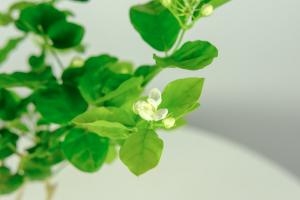Introduction
Stagnant water is a common problem in many gardens and agricultural fields. This type of water can have a significant impact on the growth and health of plants. In this article, we will discuss whether stagnant water is harmful to plants and discuss some of the ways in which it can affect plants.
What is stagnant water?
Stagnant water is water that is not moving or flowing. This can occur in a variety of situations, such as when water accumulates in a low-lying area or when water is trapped in a container. Stagnant water can contain bacteria, algae, and other microorganisms that can be harmful to plants.
Effects of stagnant water on plants
One of the most significant effects of stagnant water on plants is the restriction of oxygen to the roots. When water is stagnant, it can become depleted of oxygen, which can cause the roots of plants to become oxygen-starved. This can result in the death of roots or the entire plant. In addition, stagnant water can lead to the buildup of harmful bacteria and microorganisms that can cause diseases and infections in plants.
Stagnant water can also have a negative impact on the nutrient uptake of plants. When water is stagnant, nutrients that are present in the soil can become trapped in the water, making it more difficult for the roots of plants to absorb these nutrients. This can result in stunted growth and poor health of plants.
Preventing stagnant water in gardens and agricultural fields
There are several ways to prevent the accumulation of stagnant water in gardens and agricultural fields. One way is to ensure proper drainage in the area. This may involve grading the area or installing a drainage system that will divert excess water away from the plants.
Another way to prevent stagnant water is to avoid overirrigation. Overwatering can lead to the buildup of water in the soil, which can result in stagnant water. It is important to monitor soil moisture levels and only water plants when necessary.
In addition, it can be helpful to use planting methods that are suited to the environment. For example, plants that are adapted to wet conditions may be better suited for areas that are prone to stagnant water.
Conclusion
In conclusion, stagnant water can be harmful to plants in a variety of ways. It can restrict oxygen to the roots, impede nutrient uptake, and promote the growth of harmful microorganisms. However, there are steps that can be taken to prevent stagnant water and promote healthy plant growth. With proper drainage and irrigation, plants can thrive in even the wettest of conditions.

 how many times do yo...
how many times do yo... how many planted tre...
how many planted tre... how many pine trees ...
how many pine trees ... how many pecan trees...
how many pecan trees... how many plants comp...
how many plants comp... how many plants can ...
how many plants can ... how many plants and ...
how many plants and ... how many pepper plan...
how many pepper plan...































